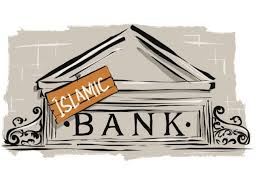Activities of IBBL
The overall activities of IBBL falls under three major categories. Collection of deposits, investment of those deposits in profitable and safe areas, and foreign exchange and foreign trade are the salient activities. All of these activities are managed and performed through the following wings:
Operations Wing: Headed by a Deputy Executive President, this wing is responsible for all general Banking operations and control of the Branches.
Investment Wing: Headed by a Deputy Executive President, this wing processes Investment proposals received from different branches, analyze them and get approval from the competent authority. This wing also responsible for monitoring the Bank’s Investment portfolio.
International Banking Wing: Headed by a Deputy Executive Vice President, this wing processes foreign transaction, foreign exchange, foreign remittance etc.
General Banking
Deposit Collection
Islami Bank Bangladesh Limited mobilizes deposits on two distinct principles:
Mudarabah principle: The depositors take the role of a financier and the bank plays the role of a business enterprise. Profit is distributed as per agreed ratio but if the enterprise suffers loss, this goes on to the financier only. All types of Term Deposits of the bank are collected under Mudarabah contract. In Mudarabah contract the financier can not take part in the management of the business.
Al-wadeeah principle: The Al-Wadeeah principle is applied when bank takes current or cost free deposits. The principle provides that the depositor deposits his/her money in the bank providing bank permission to use the fund and stipulating that, bank will be obliged to pay back the money to the depositor as and when demanded.
Accounts opened under Al-Wadeeah Principle:
- Current Account
- Non-Resident Taka Account
- Convertible Taka Account
- Foreign Currency Deposit Account
- Other Accounts such as Bills Payable
Accounts opened under Mudaraba Principle:
- Mudaraba special Notice Account
- Mudaraba Savings Account
- Mudaraba Monthly Profit Deposit Account
- Mudaraba Term Deposit Receipt
- Mudaraba Saving Bond
- Mudaraba Special Savings (Pension)
- Mudaraba Hajj Savings Account
- Mudaraba Foreign Currency Deposit Schemes(Savings)
- Mudaraba Waqf Cash Deposit Account
- Mudaraba Muhor Savings Deposit Scheme
Weightages of different Mudaraba Accounts
| Name of Accounts | Weightages |
| Mudaraba Hajj Savings account : for 11 to 25 years | 1.35 |
| Mudaraba Hajj Savings account : up to 10 years | 1.30 |
| Mudaraba Special Savings (Pension) account : for 10 years | 1.30 |
| Mudaraba Special Savings (Pension) account : for 5 years | 1.10 |
| Mudaraba Mohar Savings (Pension) account : for 10 years | 1.30 |
| Mudaraba Mohar Savings (Pension) account : for 5 years | 1.10 |
| Mudaraba Savings Bond account : for 8 years | 1.25 |
| Mudaraba Savings Bond account : for 5 years | 1.10 |
| Mudaraba Monthly profit Deposit account | 1.20 |
| Mudaraba Term Deposit account for 36 month | 1.00 |
| Mudaraba Term Deposit account for 24 month | 0.98 |
| Mudaraba Term Deposit account for 12 month | 0.96 |
| Mudaraba Term Deposit account for 6 month | 0.92 |
| Mudaraba Term Deposit account for 3 month | 0.88 |
| Mudaraba Savings Account | 0.75 |
| Mudaraba Foreign Currency Deposit account | 0.75 |
| Mudaraba Special Notice account | 0.55 |
The Banker Customer Relationship:
The Banker Customer relationship is essentially a debtor-creditor contractual relationship. This relationship may be divided into two categories.
- Legal relationship
- Behavioral relationship.
After the contractual relationship is established between the banker and customer, they have to avoid by some implied conditions of the contract as well as practices of the bank.
Some of the condition and practices are as follows:
- Customer is to use checkbook while demanding payment from his account.
- Customer should keep checkbook in his safe custody.
- Customer must inform the bank on time for any loss of check leaf or checkbooks.
- Customer while depositing money or presenting check, they must do that during business hour of the bank.
Bankers also should give necessary banking advice and help the customer in various banking activities.
Different Types of Account Holders:
Anyone can open an account with the banker if he is not incapable of entering into a valid contract and the banker is satisfied of his bonafide and is willing to enter into the business relations with him. There are certain types of accounts in regard to which the banker should take note of the relative laws and exercise pre-cautions in order to safeguard its interest. Some types are:
A/c opened by minors
Joint (two or more persons)
Firms
Co-operative societies
Government
Public bodies
Agents
Executors
Administrators
Trustees
Liquidators
Receivers
Non-Resident
Account Opening:
This section opens account. It receives account opening application from the interested applicants, examines and scrutinizes the applications and then selects final customers. Selection of customers is very much important as the success and failure of the bank is largely dependent on the valued customers. If the customer is found to be fraudulent or create some sort of forgery, it will ultimately destroy the goodwill of the company.
The following formalities must be maintained by the customer for opening of different types of account.
A: Individual
Genuine & acceptable introduction
Attested photograph of the account operator’s/A/c holder’s
Certificate from the Chairman/ Commissioner/ Gazetted Officers or any responsible person
Verification of introducer’s signature
Admittance of the signature(s) of opener/ operator’s A/c
Transaction profile
Obtain KYC
Declaration/Undertaking
Letter of Thanks
(a) It must be sent to the A/c holder and introducer
(b) Office copy to be affixed with the AOF
(c) It will have to be dispatched under registered courier
(d) Courier /Postal receipt must be affixed to the AOF
(e) This receipt must contain the A/c number against which the letter has been sent
(f) After receiving back of the acknowledgement, it must be affixed with concerned AOF for easy location in case of need
(g) If the letter of thanks is returned back, without delivery for non-availability of address or person, it must be marked on this letter and to be informed to the computer department.
B: Joint Account
- All item for individual account holder as stated above
- Two or more persons can open an account
- Authorized person can operate the account
- Authority is automatically revoked by death, insanity or bankruptcy
- Stoppage of payment by any one of the account holders
- Special instruction regarding operation of the A/c in any of the following forms:
(a) By any of the Joint account holder singly
(b) By either or survivor singly
(c) By either singly
(d) By any two or more joint account holding jointly
(e) By all the survivors jointly
Accounts mandate-regarding drawing, survivorship, power to overdraw and other matter, i.e. for withdrawal of goods kept for safe custody, separate mandate from surviving persons, closing of debit a/c, stopping operation of a/c after instantly of any person, obtain receipt made by survivors and representatives of deceased persons.
Role of survivorship incase of joint-account by husband and wife:
If the account is opened for convenience of husband, then the balance cannot be claimed by the window but to be sent to the estate of the deceased person. But, if the account is opened for the provision for wife, then the widow can claim the balance in full.
C: Sole Proprietorship
In case of opening an account by a sole-proprietor of a firm, he/she should sign the account opening form and furnish his specimen signature showing his representative character.
All items for individual account holder as stated above.
Valid trade license or attested photocopy thereof issued by the competent authority
Membership certificate from local business association/Chamber of Commerce
D: Partnership Firm
A banker should not open an account in the name of a partnership unless one or more of the partners apply to him to do so. Except where the partner, making an application for the opening of an Account in the firm’s name, is deprived of the power, which fact is known to the banker, there can be no legal objection to a banker opening an account in the name of the firm at request. Failure, however, to make proper enquiries by referring to the partnership agreement or any other record in writing which maybe available before opening of account on behalf of a firm in a partner’s name may lead a banker in trouble.
All items for individual account holder as stated above.
Valid trade license or attested photocopy thereof issued by the competent authority
Two or more person can form a partnership firm by partnership deed. (Registered notarized)
Clear mandate for operating the a/c from the partners regarding name of the persons to draw cheque and borrow money, to overdraw, to mortgage or to sell properties owned by the firm
In case of insolvency of the firm: Operation should be stopped after receiving notice of insolvency of the firm
Insolvency of the partner: If the balance is in debit, the a/c must be closed and the debt should be proved to the receiver. If the a/c is in credit the other partners may continue the account. Any cheque previously drawn by the partner’s maybe paid on the confirmation of the partners.
Death of a partner: If the account is in credit, then other partners may be allowed to continue the same but the bank should take fresh mandate from other partner but if the account is in debit then the account must be closed to determine the liability of the deceased’s estate.
E: Private Limited Company
A company registered under the Companies Act, 1913 has a legal entity apart from its shareholder. Private Company means a company which by its articles:
Restricts the right to transfer the shares if any;
Limits the number of its members 2 to 50
Prohibits any invitation to the public to subscribe for the shares, if any or debentures of the company.
When a current account is to be opened for a private limited company the banker will have to obtain the following requirements:
All terms for individual account holder as stated above
Copy of memorandum and articles of association duly certified by the Secretary/Director of the company
Certificate of incorporation
Certified copy of resolution of the board of Directors regarding opening of a/c, the execution of papers and conduct of the account.
List of Directors under the signature of the Chairman
Copies of latest financial statement/ Transaction profile.
F: Public Limited Company
Any seven or more persons associated for any lawful purpose, any subscribing their names to a memorandum of association and otherwise complying with the requirements of the Act (13A) in respect of registration, from an incorporated company. When an account is to be opened in the name of a Public limited Company the following formalities are to be observed:
All terms for individual account holder as stated above
Certified copies of memorandum and article of association are to be submitted
Certificate of incorporation
Certified copy of commencement of business for inspection and return in case of a newly floated company
List of Directors under the signature of the Chairman to be furnished
Certified copy of a resolution of the Board or Directors regarding opening of the bank a/c execution of the papers and conduct of the account to be furnished
G: Trust Account
A trustee is a person entrusted with the work of the management of a property under a trust created by the owner thereof for the benefit of another or of another and the owner section 3 of the Trust Act 1882 defines “ trust” & a trustee as, “ A trust is an obligation annexed to the ownership of property and arising out of confidence reposed in and accepted by the owner, or declared and accepted by the owner or declared and accepted by him, for the benefit or another or of another and the owner, the persons who reposes or declares the confidence is called the trustee.”
All terms for individual account holder as stated above.
Trustee is a person entrusted with the work of a management of a property under a trust deed.
Discharges his duties as per trust deed
Attested photo is required
Closing of an Account:
It could be closed either by a banker or by the customer itself.
Banker: If the customer does not have transaction with the bank for more than a year it may categorized as irregular. And if the customer does not have transaction for 10 years, the customer will be sent a letter.
Customer: If the customer intentionally wants to close the account he/she has to write an application forwarding the Manager with reasons behind the closure of the account.
Cash Section
Cash
A banker’s transactions are mainly of three types. They include:
Cash
Transfer &
Clearing
The cash section of any bank plays very significant role in general banking department because, it deals with most liquid assets. Basically cash department is the most vital and sensitive department of the branch which deals with all kinds of transaction in cash. All cash receipts and payments are made through this department. The IBBL is equipped with electronic machinery with fully computerized system which delivers quick service to its valued customers. This section receives cash from depositors and pay cash against cheques, draft, Pay order (PO), etc over the counter. This section accepts cheques from the depositors for payment in cash. The drawer who wants to receive money against cheque comes to the payment counter and presents the cheque to the officer. He verifies the following information:
Date of the cheque
Signature of the account holder
Material alteration
Whether the cheque is crossed or not
Whether the cheque is endorsed or not
Whether the amount in figure and in word corresponds with each one
Then the officer checks the cheque from the computer for further verification. Here is the following information that is checked.
Whether there is sufficient balance or not
Whether there is stop payment instruction or not
Whether there is any legal obstruction or not
The cash section deals with all type of negotiable instruments. It also includes the Vault which is used as the store of the cash instruments. The vault is insured up to a certain amount, which is called the vault limit; the excess cash is then transferred to Bangladesh Bank. When the excess cash is transferred, the cash officer issues IBDA.
Any client who wants to deposit money will fill up the deposit slip and give the form along with the money to the cash officer over the counter. The cash officer counts the cash and compares with the figure written in the deposit slip.
Bills and Clearing Section
A cheque is a bill of exchange drawn on a specified banker and not expressed to be payable otherwise than on demand. [Section-6, Negotiable Instrument Act, 1881]
A cheque may be an open cheque (which can be presented for payment by the holder) or a crossed cheque (which can be paid only through a collecting banker.)
The picture below shows a typical cheque issued by banks.
Cheques of its customers are received for collection from other banks. In case of receiving cheques, following points should be checked very carefully:
The cheques should not carry a date older than the receiving date for more than 6 months. In that case it will be a stale cheque and it will not be allowed for collection.
The amount in figure and words in both sides of the pay-in-slip should be same.
The name mentioned in the cheque should be same in both side of the pay-in-slip and it should be the same with the name mentioned in the cheque.
The cheque must be crossed
The place where banks meet and settle their dues is the clearing house. The clearing house of the IBBL, Gulshan Branch, and 42 Motijheel is the local office.
Types of Cheque
Inward clearing cheques: Inward cheques are those ones drawn on the respective branch which have been presented on other banks and will be cleared/honored through the clearing house. For example, the cheque drawn on IBBL, Head Office.
Outward Cheques: These cheques are received on the counter from other banks. There are 3 types:
- Drawn on another branch of IBBL. These are called Outward Bills for Collection (OBC).
- Drawn on another bank, which is situated in the clearing house area. This cheques are called clearing cheque.
- Drawn on another bank, which is situated outside the clearing area. This cheques are also called as OBC.
In the first case, these cheques are directly sent to the respective branch and requests them to send IBCA (Inter Bank Credit Advice) by which a branch credits the account of another branch. No clearing house formalities are necessary here. When IBCA comes, then customer’s accounts are credited of the amount for the cheque.
In the second case, the cheques are sent to the clearing house. When the drawee bank honors the cheque then the account of the depositor against the cheque is credited.
In the third case, two procedures exist. First way, if the bank exists within the clearing house area of the drawer bank, then we send the cheque to that branch of our bank and that branch collects the proceeds through clearing house formalities and sends an IBCA to us. In the second case if there is no branch of our bank, then we directly send the cheque to the drawee bank and request them to send the cheque to the proceeds by TT, DD or by other means.
Outward Bills for Collection (OBC)
OBC are those cheques drawn on other banks which are not within the same clearing house. An officer gives OBC seal on this type of cheques and later sends a letter to the manager of the branch of the same bank located in the branch on which cheque has been drawn. After collection of that bill, branch advice the concerned branch in which cheque has been presented to credit the customer account through IBCA. In absence of the branch, officer sends a letter to the manager of the bank on which the cheque is drawn. That bank will send pay order in the name of the branch. This is the procedure of OBC mechanism.
Inward Bills for Collection (IBC)
All clearing cheques are not received on the counter. Some cheques are received from other source for collection. These cheques are received from other branch of IBBL. These cheques are settled by sending IBCA.
Clearing
Remittance means transmission/transfer of money from one place to another. Local remittance represents remittance that takes place within the territory of a country.
Banks have a wide network of branches all over the country and offer various types of remittance facilities to the public/customer/client etc.
Virtually there are three types of remittances as under:
DD- Demand Draft
TT – Telegraphic Transfer
PO – Payment Order
Demand Draft
According to Section 85 (A) of the negotiable instruments Act, a demand draft is “an order to pay money drawn by one office of the bank upon other office of the same bank for a sum of money payable to order on demand.”
The followings are essential features of a demand draft issued by the bank:
- It is a negotiable instrument
- It is drawn by one office of a bank upon another office of the same bank
- It is payable on demand.
- Its payment is to be made to the person whose name is mentioned in the instrument or according to order. In other words, it can not be made payable to the bearer.
A: Issuance of Demand Draft
- A prescribed Application Form bearing No (F20). The following columns should be filled in properly.
(a) Name & address of the applicant
(b) Telephone No
(c) Date
(d) Signature of the applicant
(e) Name of the payee
(f) Drawee branch
(g) Amount in words and figure
- Commission to be realized/charged as per Head Office circular, at present @0.1 % but min TK.10/-
- Total amount should be deposited by the party in cash or cheque as per arrangement.
- Printed DD block/leaf to be filled in by a bank official as per request of the purchase i.e.
(a) Name of the issuing branch
(b) Date
(c) A/c payee rubber stamp
(d) Payee’s name
(e) Amount in words and figure
(f) Drawee branch
5. DD should be signed by two authorized officials
6. Test Number should be given for DD of TK. 25000/- and above
7. Amount should be written by a cheque written in red ink.
8. Particulars of DD should be entered in DD issue registered B-44 under supervision of a authorized official.
9. Telegram/Telex should be sent for amount exceeding Tk.1.00 lac Telex/Telegram charge should be realized from the customers.
10. If the DD issued for cash payment A/c payee rubber stamp should be cancelled and a letter requesting the drawee branch to pay the DD in cash should be issued under sealed cover and signature of the payee should be attested.
11. DD Advice should be sent on the same day.
B: Accounting Enties for Issuance of Demand Draft
Debit…………..Cash/party’s A/c
Credit………….IBCA
Credit………….Commission
C: Payment of Drafts
- When the draft is presented to the drawee branch for payment, the particulars of the draft are checked with the advice and signature(s) therein verified.
- Payment of the DD has not been stopped is to be ensured
- Verification of Test no. is to be done.
- In case the advice is not received when the draft is presented, the bank will pay the draft, after satisfying itself that the instrument is in order. However, on payment of a draft in the absence of the relative advice the drawee branch should inform the issuing branch and obtain confirmation about the payment.
- The drawee branch should ensure that the payment of the instrument is made in due course.
- As the demand drat is payable to order it is duty of the paying branch to obtain identification of the payee if payment is desired over the counter.
- If the DD is presented through a bank, the endorsement appearing on the instrument should be prima-facie in order of certified by the collecting banker.
- Though there is no time limit for presentation, the paying bank should put an enquiry if a draft is presented after a reasonable period say 6 months. Such draft may be paid if the collecting banker certifies that amount has been credited to the payee’s A/c in absence of such a certificate, it would be advisable to return the draft for revalidation before payment.
Telegraphic Transfer (TT)
Telegraphic Transfer is by far the quickest method of transferring funds form one place to another. Some times, the remitter of the funds requires the money to be available to the payee immediately. In that case the banker is requested by the remitter to remit the funds telegraphically. It is an instruction conveyed by telegraph/telex/telephone to the drawee branch for paying certain amount of money to a specified person.
A: Accounting Entries for Issuance of TT
Debit…………..Cash/Remitter’s A/c
Credit………….IBCA
Credit………….Commission
Credit………….Telex/Telephone Charges A/c
B: Accounting Entries for Payment of TT
Debit …………. IBCA A/c
Credit…………. TT Payable A/c
Debit………….. TT Payable A/c
Credit…………. Client’s A/c
Payment Order
Payment order is meant for making payment of the banker’s own or of the customer’s dues locally and not for affecting any remittance to an out station. In a sense, the payment order is used for making a remittance to the local creditors.
A: Issuance & Payment of PO
- F-19 form should be filled properly
- Total amount should be deposited through cheque/cash.
- Commission to be realized as per bank’s circular
- Printed payment order leaf should be filled in as per F-19 and signed by two authorized officers.
- Entry should be given in B-22 register under supervision of authorized official
- The instrument should be handed over to the purchaser
- PO is required to be discharged by the beneficiary where applicable on revenue stamp of appropriate value against in cash or through account.
Remarks: No Test is required for PO
Investment
The investment arrangement of IBBL can be classified into three broad categories:
- Modes related to project financing
- Modes related to financing trade and commerce and
- Special modes or system specific modes.
Loans and Cash Credit of conventional Banking may be provided to satisfy the working capital needs of the borrowers. For Islamic Banks, there are no similar modes like its conventional counterpart to meet working capital needs. Though the “Quard-E-Hassana” is customarily grouped under this category, it is not widely practiced by Islamic Banks since this mode, by its very nature, does not earn any return. Quard-E-Hassana is benevolent loans, made on the interest free basis.
Under the conventional Banking system, every advance made by a bank is a contract between the Bank and the client with the following essential features:
A creditor-borrower relationship is established
The leading and borrowing is time bounded qualifying specific date(s) on which a certain percentage of interest or borrowed capital becomes due for payment along with the principal; and The income of the Bank is known and prefixed and not in way related to or variable with the income of the borrower generated from the borrowed money.
On the other hand, the financing arrangement under the Islamic system, have the following features:
It is a contract between two partners – the Bank and the client.
The contract is time bounded in the sense that the client has to return the capital on/within specific date(s). However, the return of the Bank is not fixed either from standpoint of time or that of the rate and
Bank either shares a prefixed ratio of profit expressed in percentage terms. This profit sharing ratio is constant but actual profit is variable in respect of actual income. Or the bank may earn profit at a fixed rate on the products sold to the client which is mentioned in the trading agreement.
Bai Mechanism
Under Bai mechanism IBBL practices the following modes:
Bai-Murabaha: Bai-Murabaha may be defined as a contract between a buyer and a seller under which the seller sells certain specific goods (permissible under Islamic Shari’ah and the Law of the Land), to the buyer at a cost plus agreed profit payable in cash or on any fixed future date in lump-sum or buy installments. The profit marked-up may be fixed in lump sum or in percentage of the cost price of the goods.
Bai-Muajjal: Bai-Muajjal may be defined as a contract between a buyer and a seller under which the seller sells certain specific goods (permissible under Islamic Shariah and the Law of the country) to the buyer at an agreed fixed price payable at a certain fixed future date in lump-sum or within a fixed period by fixed installment. The seller may also sell the goods purchased by him as per order and specification of the buyer.
Bai-Salam: Bai-Salam may be defined as a contract between a buyer and a seller under which the seller sells in advance in the certain commodity (ies)/ products (s) permissible under Islamic Shariah and the law of the land to the buyer at a agreed price payable on execution of the said contract and the commodity (ies)/ products (s) to the buyer at a future time in exchange of an advance price fully paid on the spot.
Bai Intishna’a: Intishna’a sale is a contract in which the price is paid in advance at the time of the contract and the object of sale is manufactured and delivered later. The majority of the jurist considered Intishna’a as one of the divisions of Salam, therefore, it is subsumed under the definition of Salam.
Bai as Sarf: Bank purchase the foreign currency value of the documents under Bai-As-Sarf: Foreign Documentary Bill (FDB).Bai-As-Sarf is a trading mechanism where the bank buys foreign currency from the client at an agreed rate. In case of Bai-As-Sarf: FDB bank purchase the value of the export documents expressed in Foreign Currency and paid equivalent taka in favor of the client. The client will get net amount after adjustment of their respective liabilities, if any.After realization of documents value from the issuing bank/importers bank abroad the FDB liability will be adjusted and bank will earn exchange income from it.
Share Mechanism
Mudarabaha: It is a form of partnership where one party provides the funds while the other provides the expertise and management. The first party is called the Sahib-Al-Maal and the letter is referred to as the Mudarib. Any profit accrued is shared between the two parties on a pre-agreed basis, while capital loss is exclusively borne by the partner providing the capital.
Musharaka: Musharaka means a partnership established between two or more partners for purposes of a commercial venture participated both in the capital and management. Thus it indicates different type of profit and loss sharing partnership.
Rent (ijara) Mechanism
Hire purchase under Sirkatul Melk (HPSM): Under this mode the Bank may supply implements/equipments/goods on rental basis. The ownership of the implements/equipments/goods will be with the Bank and the client jointly and the portion of the client will remain to the Bank as mortgage until the closer of the investment account, but the client will be authorized to possess the equipment for certain period. The client, after completion of the installment, will be the owner of the implements/equipments/goods.
Welfare Oriented Investment Schemes
- House hold Durable Scheme
- Housing Investment Scheme
- Real Estate Investment Scheme
- Transport Investment Scheme
- Car Investment Scheme
- Investment Scheme for Doctors
- Small Business Investment Scheme
- Agriculture Implements Investment Scheme
- Rural Development Scheme
- Micro Industries Investment Scheme
- Mirpur Silk Weavers Investment Scheme
















